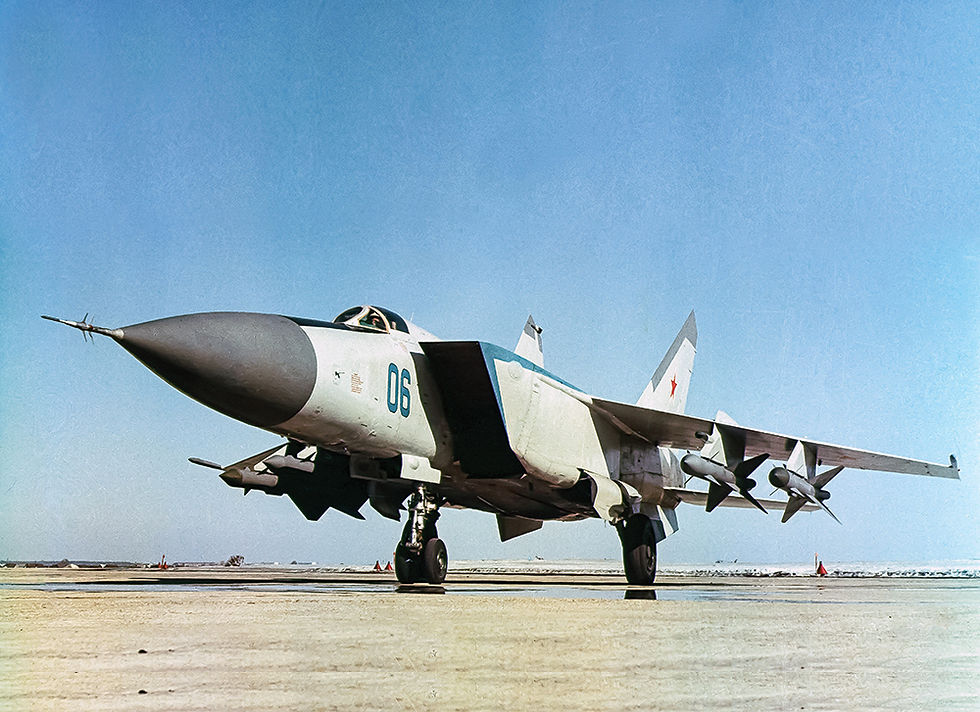
A Collision in the Cold War: The Downing of the U-2 Dragon Lady
- thiliwriting
- Mar 11, 2024
- 3 min read
The year was 1960. The Cold War, a chilling standoff between the United States and the Soviet Union, cast a long shadow over the world. In this atmosphere of suspicion and tension, a seemingly routine reconnaissance mission would escalate into a major international crisis. This is the story of the U-2 Dragon Lady incident, a pivotal moment in Cold War history.
The Dragon Lady Takes Flight
The Lockheed U-2, nicknamed the "Dragon Lady" for its distinctive elongated fuselage and high-altitude capabilities, was a revolutionary aircraft for its time. Developed by the American aerospace giant Lockheed, the U-2 could soar to unimaginable heights exceeding 70,000 feet, well beyond the reach of Soviet air defenses at the time. This staggering ceiling made it an ideal tool for covert reconnaissance, allowing it to capture detailed photographs of enemy territory without risk of interception.
A Mission with High Stakes
On May 1st, 1960, a U-2 piloted by Francis Gary Powers, a former CIA pilot now working for a private contractor, took off from a secret airbase in Pakistan. His mission: to photograph sensitive Soviet military installations across a vast swathe of Soviet territory, stretching from northwest Pakistan to the Aral Sea.
Powers’ flight path was carefully planned, taking advantage of the U-2’s incredible range and altitude. He was expected to fly deep into Soviet airspace, undetected by radars of the era. However, unknown to Powers or his superiors, Soviet technology was rapidly advancing.
A Collision Course
As Powers navigated his U-2 across Soviet airspace, a series of events unfolded that would alter the course of history. Soviet radar operators, equipped with newly developed high-altitude detection systems, picked up the faint signal of the U-2. Interceptors were scrambled, and a tense pursuit began.
A Tragic Downfall
Despite attempts to evade interception, Powers’ U-2 was ultimately struck by a surface-to-air missile fired by Soviet forces. The aircraft was critically damaged, forcing Powers to eject. He safely parachuted into Soviet territory, where he was promptly captured.
Back in the United States, initial reports claimed a civilian weather plane had gone missing, maintaining a veil of secrecy surrounding the true purpose of the U-2 Dragon Lady and its pilot. However, the charade crumbled within days. The Soviets triumphantly announced they had downed an American spy plane and captured its pilot, releasing photographs and a confession from Powers himself.
A World on Edge
The U-2 incident triggered a global uproar. The American public, initially kept in the dark, grappled with feelings of deception and betrayal. The carefully constructed image of U.S. technological superiority took a hit. International relations plunged further into a state of hostility.
A Summit Shattered
The timing of the incident could not have been worse. A highly anticipated summit between U.S. President Dwight D. Eisenhower and Soviet Premier Nikita Khrushchev, planned for Paris just weeks later, was abruptly scrapped. The hope for easing Cold War tensions had been replaced by a renewed sense of distrust.
The Fallout and Aftermath
The consequences of the U-2 incident were far-reaching. Powers was put on trial in the Soviet Union and sentenced to ten years imprisonment for espionage. He was eventually released in a prisoner swap two years later.
Within the U.S. government, the incident sparked a period of introspection and reevaluation of aerial reconnaissance programs. Technology advancements became a top priority to maintain an intelligence edge.
A Legacy of Cold War Tensions
The U-2 Dragon Lady incident serves as a stark reminder of the dangers inherent in the Cold War. It highlights the fragility of peace in a climate of constant suspicion and the potential for miscalculation that could have escalated into a much larger conflict.
However, the story goes beyond the immediate events. The U-2 incident also marked a turning point in the history of aerial reconnaissance. It demonstrated the limitations of relying solely on technological superiority and emphasized the need for intelligence gathering beyond just aerial photography.
Beyond the Black and White
The story of the U-2 Dragon Lady incident continues to be debated by historians and aviation enthusiasts alike. While the basic facts are uncontested, questions remain. Was the mission a blatant act of aggression, or a miscalculation driven by a desire for intelligence? Was Powers solely a pilot, or did he have deeper ties to the CIA?
A Look Forward
The U-2 Dragon Lady incident, despite its tragic implications, has left an indelible mark on history. It serves as a cautionary tale, reminding us of the consequences of unchecked suspicion and the constant struggle to maintain peace in the face of international tensions. As the world continues to navigate a complex geopolitical landscape, the lessons learned from this Cold War collision



Comments